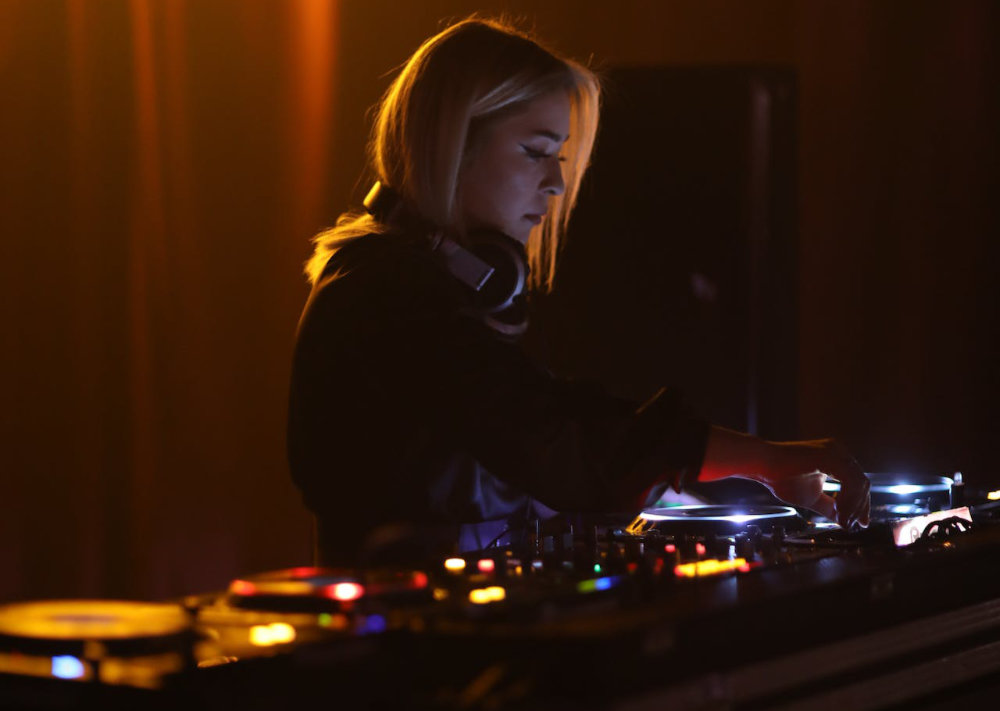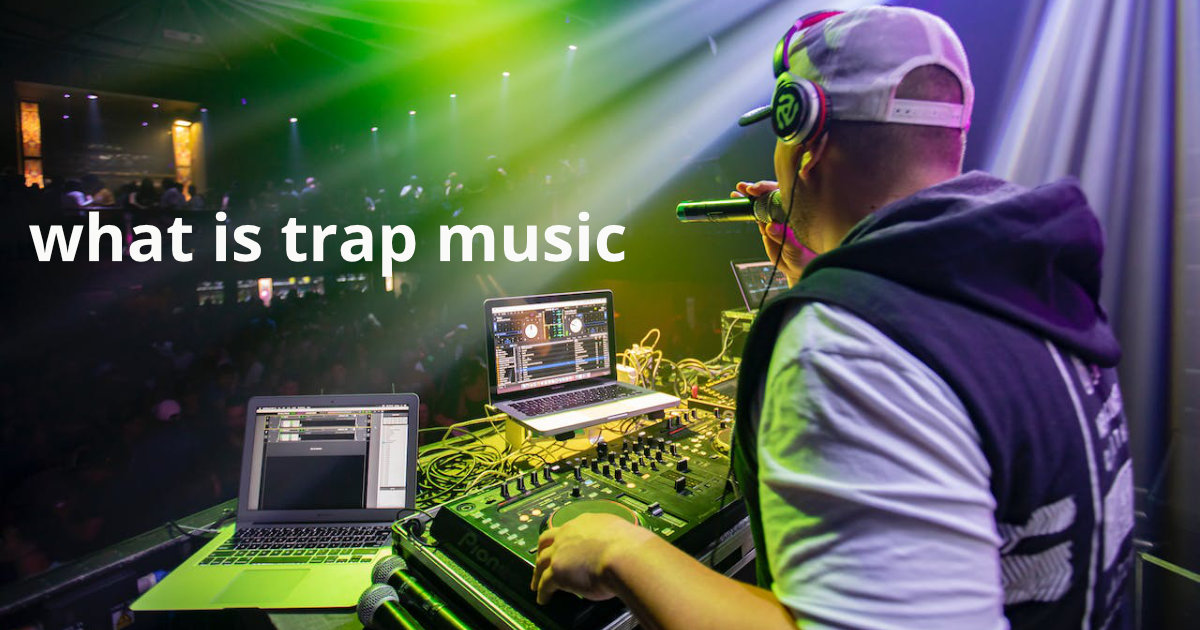Estimated reading time: 7 minutes
If you’re someone who loves Hip Hop electronic music, you have probably come across a genre called trap music. But, have you ever stopped to ask, “What is trap music anyway?” Let’s dive into the origins, history, and characteristics of this enigmatic genre.
Table of contents
Definition of Trap Music
Trap music is a sub-genre of hip-hop that first started in the early 2000s. Its name comes from the term “trap,” slang for places where illegal drug trades happen. This genre is known for its aggressive lyrical content, layered synthesizers, crisp snares, and deep 808 kicks.
Origins of Trap Music
Southern hip-hop is the fertile soil from which trap music sprung. Hustling, poverty, and drug culture formed the genre’s early roots. These themes were (and still are) frequently explored in trap lyrics, marked with a raw edge and brutally honest storytelling.
History of Trap Music
The roots of trap music can be traced back to the drug dealings and gritty streets of the southern United States. Trap music originated in the early 2000s with Southern hip-hop artists like T.I and Young Jeezy. However, the sound would later become popularly associated with producer Lex Luger and artists like Gucci Mane and Waka Flocka Flame.
Early origins in Southern hip-hop
The southern hip-hop scene played a pivotal role in the rise of trap music. Artists like Goodie Mob, Mannie Fresh, and Lil Wayne paved the way for the emergence of trap music as a genre. Their contributions to the sound and style of trap music cannot be overstated. It was the fusion of southern rap with trap elements that gave birth to the sound of trap music as we know it today.
One of the most iconic moments in the history of trap music is the release of T.I’s second album “Trap Muzik”. With this album, the genre became distinctly recognised, as many rappers started to incorporate its distinct sound and lyrical themes into their songs.
Influence of drug culture on trap music
Trap music’s evolution cannot be separated from the influence of drug culture. As the name suggests, “trap” originally referred to places where drug deals take place. The themes of violence, struggle, and success prevalent in many trap songs are often tied to these environments.
The term “trap” refers to the locations where drugs are sold, known as “trap houses.” These trap houses became the backdrop for the creation of a new sound that would revolutionize the music industry.

Key Elements of Trap Music
Now that you understand where trap music comes from, let’s talk about what sets it apart from other types of music.
Heavy basslines and kick drums
Trap music utilises heavy basslines and booming kick drums to create a profound, earth-shaking sound. The kick drum is often layered with a short, deep 808 bass sample, which contributes to the genre’s aggressive, powerful vibe.
Use of 808 drum machine
One of the most distinguishable elements of trap is the extensive use of the Roland TR-808 drum machine. Its unique sound, especially the long, booming kick and sharp, crisp snare, has come to symbolise trap music.
High tempo and energetic beats
Trap beats are generally high tempo and full of energy. The rhythm often features rapid hi-hat rolls and snares, sometimes alternating between half-time and double-time tempos, which gives trap music its distinctive head-nodding vibe.
- What is Phonk? Uncovering the Origins and Definition
Evolution of Trap Music
Transitioning from its regional Southern hip-hop roots, trap music has exploded into a mainstream phenomenon.
Transition from regional to mainstream popularity
In the early 2010s, trap music started to make its way into the mainstream pop culture. Artists like Fetty Wap and Lil Uzi Vert achieved massive success with trap-inspired hits such as “Trap Queen” and “XO TOUR Llif3.” These songs became anthems of a generation and solidified trap music’s place in popular culture. The infectious beats and catchy hooks of trap songs resonated with listeners of all backgrounds.
While trap started as a regional sub-genre, it quickly gained traction and is now a staple in the worldwide music scene. Today, you can hear trap beats in many popular songs, commercials, and even TV show soundtracks!
Incorporation of electronic and pop influences
With its rise in popularity, trap music started to collide with other genres, mainly electronic music and pop. This fusion has led to the creation of a sub-genre known as “EDM Trap,” which repurposes traditional trap elements and pairs them with electronic sounds and danceable beats.
Trap Music’s Influence on Other Genres
Trap music’s influence extends far beyond the realm of hip-hop. It has made its mark on pop artists like Cardi B and Bad Bunny, who have incorporated trap elements into their music. Latin trap, a subgenre that combines trap music with Latin influences, has also gained significant popularity in recent years. The crossover appeal of trap music has helped it break down barriers and reach a wider audience.
Popular Artists in Trap Music
There are many big names in the trap genre today, but one artist has truly embodied the spirit and essence of trap music: Cardi B.
Cardi B: From reality TV star to trap queen
One artist who has used trap music’s aesthetic to carve her path is Cardi B. From her start on reality television to dominating the global music charts, Cardi B’s beat-centric, no-holds-barred style epitomizes the trap sound and culture.
With her unmatched energy and vigorous lyricism, she has firmly established herself as the reigning queen of trap.
Notable Artists and Songs in the Trap Music Genre
| Artist Name | Notable Achievements |
|---|---|
| Cardi B | Grammy-winning debut album “Invasion of Privacy” |
| Bad Bunny | Pioneered the Latin trap genre |
| Fetty Wap | Hit single “Trap Queen” |
| Lil Uzi Vert | Known for his unique style and trap-influenced sound |
| Artist | Song |
|---|---|
| T.I. | “Trap Muzik” |
| Gucci Mane | “Lemonade” |
| Young Jeezy | “Soul Survivor” |
| Cardi B | “Bodak Yellow” |
| Bad Bunny | “Soy Peor” |
| Fetty Wap | “Trap Queen” |
| Lil Uzi Vert | “XO TOUR Llif3” |
| Goodie Mob | “Cell Therapy” |
| Mannie Fresh | “Real Big” |
| Lil Wayne | “A Milli” |
Pioneering trap producer Lex Luger
Witness as innovative trap producer Lex Luger (known for his work with artists like Juicy J, Waka Flocka Flame, Rick Ross, and Wiz Khalifa) constructs a captivating trap beat entirely from scratch.
The Future of Trap Music
As trap music continues to dominate the music industry, its future looks promising. The genre has proven its staying power and ability to evolve. With artists constantly pushing boundaries and experimenting with new sounds, trap music is expected to continue influencing and shaping the music industry for years to come. Its global appeal and infectious beats make it a force to be reckoned with.
Conclusion
In conclusion, trap music is not just a genre; it’s a cultural movement. Its rise in popularity has revolutionized the global music industry, proving that music has the power to cross geographical boundaries and bring people together. So, next time you listen to a trap track, remember the history and culture embedded within its beats and bars. Happy Listening!
- What is Bass Music? A Deep Dive into the World of Low-End Frequencies
- What is Grime Music? From East London’s Underbelly to Global Beats
- The Evolution and Impact of Trap Music Artists: From Streets to Mainstream Success
FAQ
Trap music is a genre that originated in the southern hip-hop scene and is characterized by its hard-hitting kick drums, rapid hi-hats, and deep 808 basslines.
Trap music is characterized by heavy basslines, kick drums, and the use of 808 drum machines. It also features high tempo and energetic beats.
Trap music stands out due to its heavy basslines, energetic beats, and its association with the struggles and experiences of the street life.
Trap music has influenced other genres by incorporating trap elements into their sound. Pop artists like Cardi B and Bad Bunny have embraced trap music, and Latin trap has become a popular subgenre.
Some notable artists in the trap music genre include T.I., Gucci Mane, Young Jeezy, Cardi B, Bad Bunny, Fetty Wap, Lil Uzi Vert, Goodie Mob, Mannie Fresh, and Lil Wayne.
